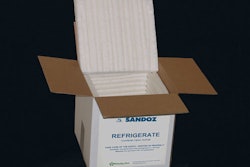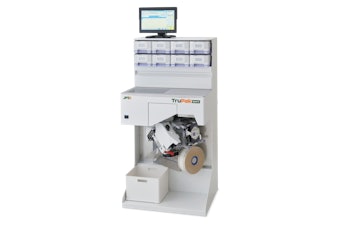This content was written and submitted by the supplier. It has only been modified to comply with this publication’s space and style.
Pharmaceutical manufacturing, the most solvent-intensive of all chemical processes, also generates the most waste per unit of product compared with other processes. Pending greenhouse-gas legislation, if approved, would dramatically increase pharmaceutical manufacturing costs related to solvent usage. A new white paper from Rockwell Automation explores the possible impact of proposed legislation on pharmaceutical solvent usage and provides insights on how to more accurately determine the risk and financial impact of a carbon tax.
The paper, “An Executive Guide to Pharmaceutical Manufacturing Efficiency and the Effect of Environmental Legislation,” notes that historically, the ROI of solvent recycling has not met average industry hurdle rates because of the high fuel value of the spent solvent. The paper’s author demonstrates that greenhouse-gas legislation will fundamentally alter the ROI analysis boundaries because a carbon tax operates like a value-added tax and requires the analyst to calculate the life-cycle inventory of greenhouse-gas emissions. In addition, the paper contends that solvent recycling investments are misclassified and a lower ROI hurdle rate is more appropriate.
“An investment in solvent recovery actually reduces both a company’s supply-chain risk and manufacturing costs – solvent recycling should be viewed as a profit margin insurance policy,” said David March of Rockwell Automation, and author of the paper. “Pending greenhouse-gas legislation will increase the cost of organic solvents. Due to the very high atom economy leverage employed in pharmaceutical manufacturing, the cost impact could be multiplied by as much as 16,000. Because solvent recycling shields the company’s profit margins from this negative leverage, the investment risk in solvent recovery technology is significantly lower than that of typical production capital investments.”
The paper lays out an argument for changing the investment analysis context from one of cost savings to one more directly focused on sustainability and business continuity. It also provides a methodology for calculating the impact of a carbon dioxide tax on the ROI of solvent recovery, and offers tips for easing the revalidation process using recycled materials.
“In the short run, investing in solvent recovery offers companies an effective profit-protection strategy. In the long term, reduced reliance on solvents that require high carbon-dioxide expenditures will be necessary,” March said. “Bottom line: solvent recovery offers a simple, low-risk method to reduce your carbon footprint and help shield your company’s profits from significant adverse effects of environmental legislation.”
To download the white paper, “An Executive Guide to Pharmaceutical Manufacturing Efficiency and the Effect of Environmental Legislation,” or for more information about Rockwell Automation solutions for the life sciences industry, please visit www.rockwellautomation.com/industries/lifesciences/.
The paper, “An Executive Guide to Pharmaceutical Manufacturing Efficiency and the Effect of Environmental Legislation,” notes that historically, the ROI of solvent recycling has not met average industry hurdle rates because of the high fuel value of the spent solvent. The paper’s author demonstrates that greenhouse-gas legislation will fundamentally alter the ROI analysis boundaries because a carbon tax operates like a value-added tax and requires the analyst to calculate the life-cycle inventory of greenhouse-gas emissions. In addition, the paper contends that solvent recycling investments are misclassified and a lower ROI hurdle rate is more appropriate.
“An investment in solvent recovery actually reduces both a company’s supply-chain risk and manufacturing costs – solvent recycling should be viewed as a profit margin insurance policy,” said David March of Rockwell Automation, and author of the paper. “Pending greenhouse-gas legislation will increase the cost of organic solvents. Due to the very high atom economy leverage employed in pharmaceutical manufacturing, the cost impact could be multiplied by as much as 16,000. Because solvent recycling shields the company’s profit margins from this negative leverage, the investment risk in solvent recovery technology is significantly lower than that of typical production capital investments.”
The paper lays out an argument for changing the investment analysis context from one of cost savings to one more directly focused on sustainability and business continuity. It also provides a methodology for calculating the impact of a carbon dioxide tax on the ROI of solvent recovery, and offers tips for easing the revalidation process using recycled materials.
“In the short run, investing in solvent recovery offers companies an effective profit-protection strategy. In the long term, reduced reliance on solvents that require high carbon-dioxide expenditures will be necessary,” March said. “Bottom line: solvent recovery offers a simple, low-risk method to reduce your carbon footprint and help shield your company’s profits from significant adverse effects of environmental legislation.”
To download the white paper, “An Executive Guide to Pharmaceutical Manufacturing Efficiency and the Effect of Environmental Legislation,” or for more information about Rockwell Automation solutions for the life sciences industry, please visit www.rockwellautomation.com/industries/lifesciences/.
Companies in this press-release






















